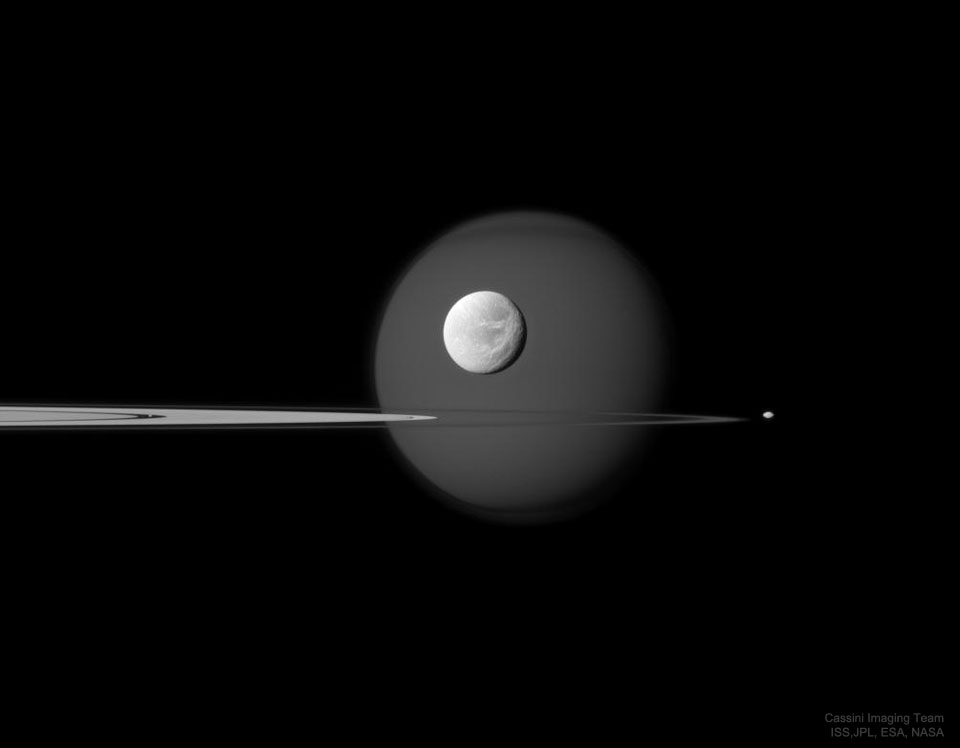2021年04月04日
In, Through, and Beyond Saturn’s Rings
Image Credit: Cassini Imaging Team, ISS, JPL, ESA, NASA
Explanation: Four moons are visible on the featured image — can you find them all? First — and farthest in the background — is Titan, the largest moon of Saturn and one of the larger moons in the Solar System. The dark feature across the top of this perpetually cloudy world is the north polar hood. The next most obvious moon is bright Dione, visible in the foreground, complete with craters and long ice cliffs. Jutting in from the left are several of Saturn’s expansive rings, including Saturn’s A ring featuring the dark Encke Gap. On the far right, just outside the rings, is Pandora, a moon only 80-kilometers across that helps shepherd Saturn’s F ring. The fourth moon? If you look closely inside Saturn’s rings, in the Encke Gap, you will find a speck that is actually Pan. Although one of Saturn’s smallest moons at 35-kilometers across, Pan is massive enough to help keep the Encke gap relatively free of ring particles. After more than a decade of exploration and discovery, the Cassini spacecraft ran low on fuel in 2017 and was directed to enter Saturn’s atmosphere, where it surely melted.
Tomorrow’s picture: remaining wisps
土星环之内与之外
影像提供: Cassini Imaging Team, ISS, JPL, ESA, NASA
说明: 这幅主题影像里有4颗卫星,你找得到吗?第一颗是远在影像后方背景里的土卫六(泰坦)。土卫六除了是土星的最大卫星之外,也是太阳系排得上号的大卫星。影像里这颗永远笼罩着厚云的卫星,顶端之暗色结构称为北极罩。第二颗最显而易见的卫星,是影像前景的亮白色土卫四,其表面的撞击坑和长长的冰悬崖清楚可辨。从影像左侧伸入的,则是数个广袤的土星环,其中包括有暗色恩克环缝的土星A环。在土星环右侧的影像里,可见约80公里宽、身为土星F环守护卫星的土卫十七。那第4颗卫星呢?如果仔细检视土星环内的恩克环缝,可以见到以小亮斑之姿现身的土卫十八。虽然宽35公里的土卫十八,是土星最娇小的卫星之一,但它的质量还是大到让恩克环缝内只剩寥寥少数的环缝粒子。在进行了十多年的探索与发现之后,卡西尼号太空船于2017年耗尽燃料,在接到指令后,纵身切入土星的大气并销熔于其中。
明日的图片: remaining wisps



